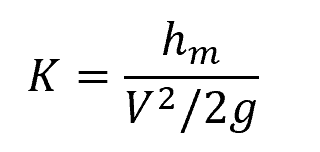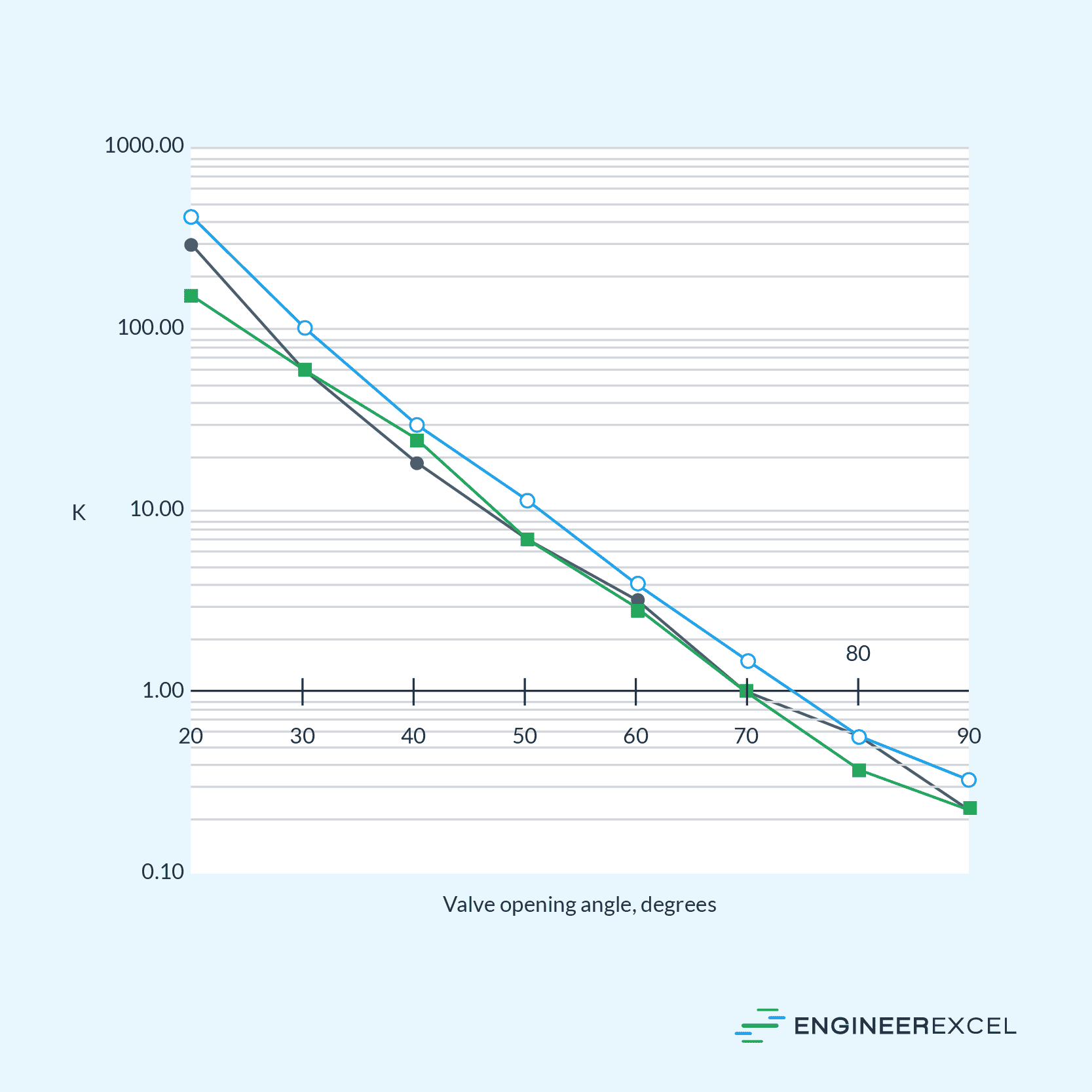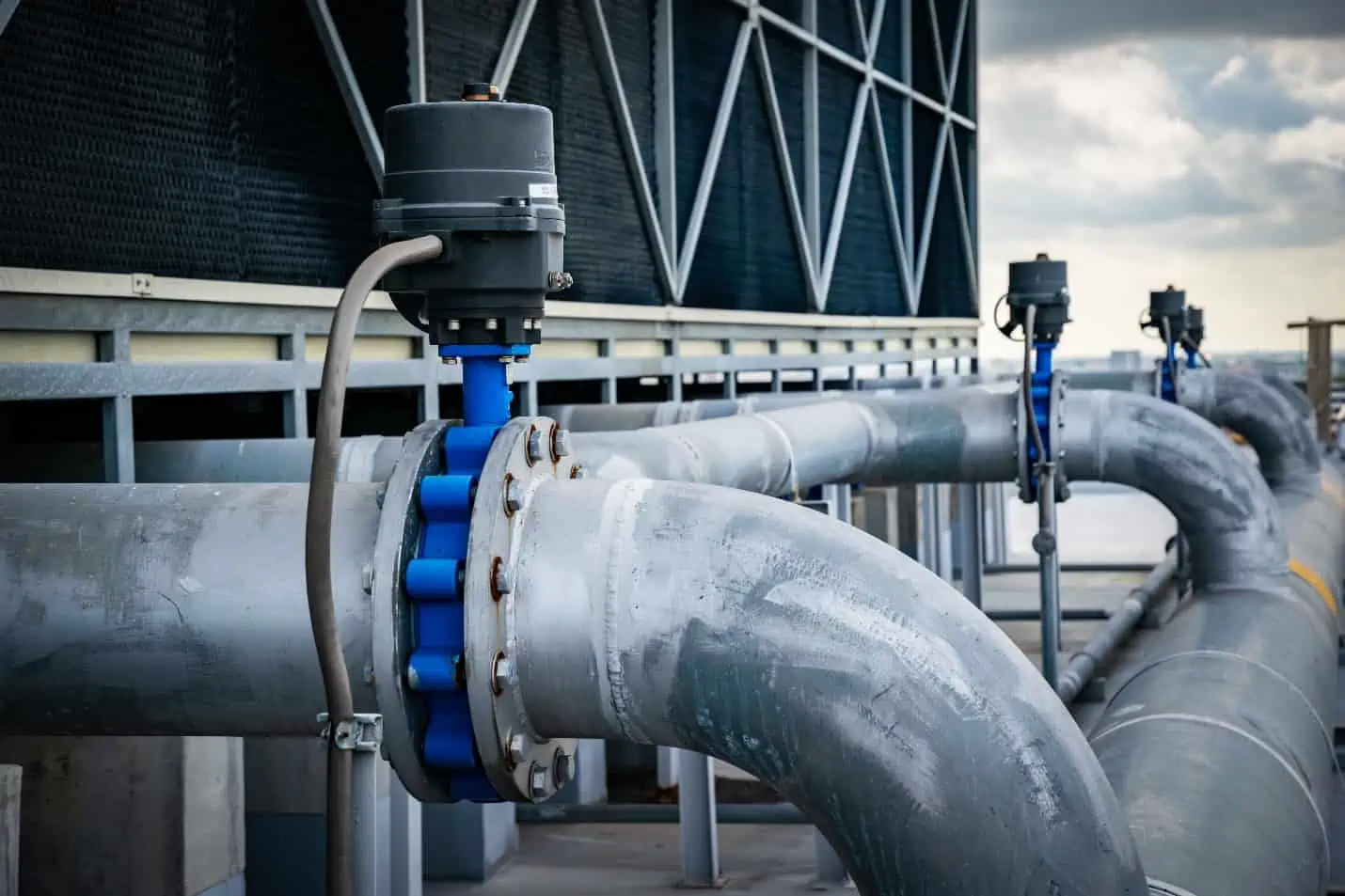When fluid passes through a valve, it incurs pressure loss due to the resistance caused by the valve geometry and material. This pressure loss across a valve is quantified using a dimensionless parameter called the loss coefficient.

In this article, the focus is on the loss coefficient of butterfly valves— a type of valve that uses a rotating disk to regulate flow.
What Are Butterfly Valves
Butterfly valves are a type of flow control device that consists of a rotating disc attached to a control lever that can be adjusted to control the flow of fluids, as shown in the diagram below.


Elevate Your Engineering With Excel
Advance in Excel with engineering-focused training that equips you with the skills to streamline projects and accelerate your career.
When closed, the disc seats against an O-ring or a compliant seal. Rotating the disc by a single 90° turn allows the valve to be completely open. This makes the design ideal for controllable quick-opening and quick-closing situations, such as in fire protection systems.
Butterfly valves are characterized by a low-pressure drop when fully open, fast response time, and a wide range of sizes, making them suitable for both large and small diameter pipelines. Additionally, they are efficient and low maintenance, making them ideal for industrial, municipal, and commercial operations. However, considerable dynamic torque is needed to close these valves, and losses are high when the valves are nearly closed.
In terms of applications, butterfly valves can be found in water and wastewater treatment plants, chemical and petrochemical plants, and HVAC systems. Industries like food and beverage, pharmaceuticals, and pulp and paper also utilize butterfly valves for the regulation of fluids.
Loss Coefficient of Butterfly Valves
When selecting a butterfly valve, it is important to know its minor loss coefficient to ensure accurate flow calculations during design. The minor loss coefficient directly affects the contribution of the butterfly valve to the total pressure losses in the system.
In essence, the loss coefficient represents the valve’s resistance against fluid flow, which varies based on the valve design, size, disk shape, and flow characteristics. Its value can be determined either experimentally or via simulations.
In general, it can be calculated using the following formula:

Where:
- K = loss coefficient of the valve [unitless]
- hm = minor head loss due to the valve [m]
- V = fluid velocity [m/s]
- g = acceleration due to gravity [9.81 m/s2]
For partially open butterfly valves, the loss coefficient typically follows an exponential relationship with respect to the disk angle. For swirling flows, the loss coefficient can be further affected by the vortex shedding frequency.
The graph below shows the loss coefficient of three different butterfly valves with respect to the valve position or opening angle. As shown below, its value typically varies from approximately 0.2 to greater than 100, depending on the valve position.

Keep in mind that these are generic values, and specific loss coefficients for a particular valve may vary. Therefore, it is best to consult the manufacturer’s data to obtain the correct loss coefficient for your application.
Factors Affecting Loss Coefficient of Butterfly Valves
To optimize the efficiency of butterfly valves, it is important to understand the factors that influence their loss coefficient values.
As shown in the graph above, one prominent factor is the valve’s angle of rotation. The larger the opening angle, the lower the minor loss coefficient, and vice versa. Keep in mind that this relationship is typically nonlinear in nature.
Another factor is the valve geometry, including the disc shape and thickness. Discs with streamlined profiles or those with an ellipse shape enhance flow characteristics, resulting in a lower loss coefficient. Conversely, a thicker, full-circle disc can obstruct flow, increasing minor loss coefficient.

Flow conditions, such as fluid velocity and Reynolds number, also impact the minor loss coefficient. At higher Reynolds numbers, you are likely to see an increase in the loss coefficient due to increased turbulence and fluid resistance. This also means that turbulent flow typically generates a higher loss coefficient compared to a laminar flow.
Lastly, the type of fluid passing through the butterfly valve affects the loss coefficient. Fluid properties, such as viscosity and density, influence how the fluid interacts with the valve components. More viscous fluids, for example, can create a greater drag force on the valve components, impacting the loss coefficient.
